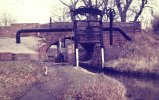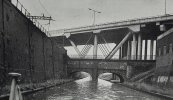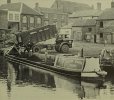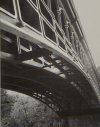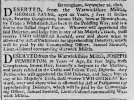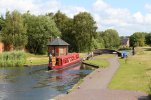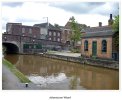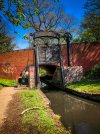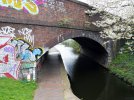From Wikipedia:
UK canal boats[edit]
Planing vessels[edit]
An "express boat" service was started on the
Glasgow, Paisley and Ardrossan Canal in 1830. One of its employees, William Houston, was guiding an empty horse-drawn boat when the horse took fright and bolted. Expecting the horse soon to tire, he hung on, but was amazed when the boat
rose up onto its bow wave and shot off along the canal at high speed. Mr Houston was canny enough to realise the potential, and soon travellers were being hauled along the canals at high speed in an early example of
planing.
[6]
This canal—11 miles without locks into the centre of Glasgow—was an ideal situation for this venture. Once the boat was planing, the wash that damaged the canal banks largely disappeared, and by 1835, flat iron boats up to 65 feet made 323,290 passenger trips at 10 mph in a year. Services were established on the Forth and Clyde and on the
Shropshire Union Canal flyboats with single horse-pulled, 22-ton loads at 10 mph as late as 1847.
[7][8] They were also called "swift boats" or "gig boats".
[9]
Occurring a year after the opening of the
Liverpool and Manchester Railway, this development sparked enormous interest in the canal world. Books were published by Sir
William Armstrong Fairburn[10] and Sir
John Benjamin Macneill.
[11] The latter records experiments on the Paddington Canal in London attended by
Thomas Telford and
Charles Babbage. They hoped that steamboats running on the canals would be able to attain these high speeds, thus fighting off the threat of the railways.
Unfortunately, a brilliant series of experiments conducted by the young
John Scott Russell, for which he eventually received the gold medal of the
Royal Society of Edinburgh and initiated research in
solitons, demonstrated that the phenomenon could only be achieved in very shallow canals, and that steamboats needed very different conditions.
[12]
Flyboats pulled by one or more horses continued to be used in Britain and Ireland
[13] for a number of years, and even in America, but
ultimately the railway proved the winner.
High-speed running of this kind is no longer permitted on UK canals, with a blanket speed limit of four miles per hour in the modern, leisure-dominated era.
[14]
Canal carrying-company flyboats: long-distance overnight services[edit]
 Saturn
Saturn, a restored 1906 fly-boat
A fly-boat is also a
narrowboat which works all day and all night (24/7) on the
English canal system without mooring.
[15] All-male professional crews, chosen for their skill and experience, slept in
different watches at night and day to keep progress as fast as possible.
[16] They became common around 1834
[17] and later attempted to emulate the railways by running to timetables so that deliveries could be assured.
[16][18] Some of these boats were operated by
railway companies, as a method of providing services into rival railway territory.
[16]
The
design of the hull lines was finer and more streamlined than other narrowboats, limiting cargo capacity but increasing top speed.
[16] Being operated by the canal owners, these express services had priority over all other traffic when encountering congestion such as at
locks.
[16] Time-sensitive cargoes such as
cheese and other valuable produce paid a premium for the fast delivery,
[16] which survived until the outbreak of
World War I.
[16]
One 1906 fly-boat from the
Shropshire Union Canal,
Saturn, survives in preservation today and is used for historical trips and education.
[19]

